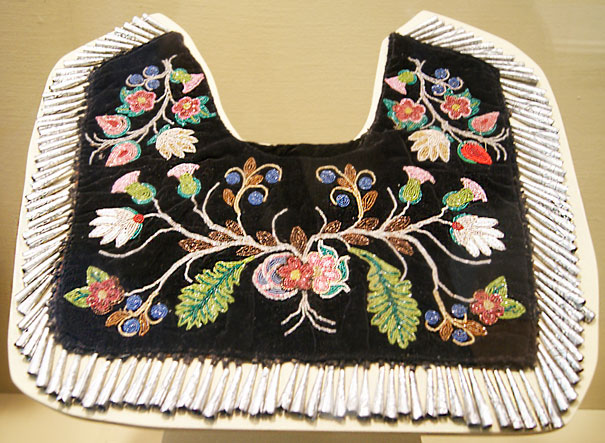 The Portland area was originally inhabited by two bands of Upper Chinook Native Americans. The Multnomah people settled on and around Sauvie Island, and the Cascades Indians settled along the Columbia Gorge. Oregon and its tribes were first ‘discovered’ by the expedition of Lewis and Clark in 1805-6.
The Portland area was originally inhabited by two bands of Upper Chinook Native Americans. The Multnomah people settled on and around Sauvie Island, and the Cascades Indians settled along the Columbia Gorge. Oregon and its tribes were first ‘discovered’ by the expedition of Lewis and Clark in 1805-6.
The site of Portland was known to settlers in the first half of the 1800s as “The Clearing”. In 1843, Tennessee pioneer William Overton and Boston lawyer Asa Lovejoy filed a 640 acres (260 ha) land claim that encompassed that area and the nearby waterfront and forest. Portland is located on the Willamette River (that Willamette is pronounced to rhyme with ‘damn it’, by the way). In 1845 the new town was officially named Portland.
In 1850 the city’s population was 821 and, in typical frontier fashion, was predominantly male, consisting of 653 white men, 164 white women and four “free coloured” people. It was already the largest settlement in the Pacific Northwest. On February 8, 1851, the city was officially recognised. It now has a population of around 600,000. Portland was the largest port in the Pacific Northwest for most of the 19th century, until the 1890s, when direct railway routes between the deep-water harbour in Seattle and on eastward was built.
In 1905, Portland was the host to the Lewis and Clark Centennial Exposition. This event proved so popular in promoting the city that it doubled the population in 15 years; and during the dot-com boom of the 1990s Portland saw another increase in population. Opportunities in the graphic design and new Internet companies offered good jobs and lower housing costs. However, when the city fell victim to the worldwide economic down-turn, the city found itself with a large artistic workforce and fewer jobs. Evidence of that creative pool can still be seen in independent boutiques, artisan foods and the weekend craft market down by the river.
 Portland, at least in my opinion, seems to be a cradle for free-thinking entrepreneurs and those with unique ideas and aspirations. It isn’t an intimidatingly over-prosperous city but it’s warm and welcoming. There are shopping malls aplenty which offer high-end international labels as well as cut-price national brands that might well be of more interest to the tourist with good-value exchange dollars burning a hole in soon-to-be-replaced trouser pockets.
Portland, at least in my opinion, seems to be a cradle for free-thinking entrepreneurs and those with unique ideas and aspirations. It isn’t an intimidatingly over-prosperous city but it’s warm and welcoming. There are shopping malls aplenty which offer high-end international labels as well as cut-price national brands that might well be of more interest to the tourist with good-value exchange dollars burning a hole in soon-to-be-replaced trouser pockets.
That aforementioned Saturday and Sunday market might present some more individual apparel and gifts; Portland is also home to perhaps the world’s biggest bookshop, Powell’s, and one can spend a morning browsing its shelves of new and pre-loved treasures.
This is an accessible city. The blocks are said to be half the size of those found in New York, so things are liable to be closer than one might imagine, and probably even walkable. There is a comprehensive network of public transport so there should be no fear of blowing the budget on cabs. Yes, there are plenty of those around, but why not pretend to be a local for a while and buy a pass for buses and trams. The cost is much more appealing than a taxi fare and the routes will take you where, or near where, you want to be.
Plenty of alternative culture here. Striking wall murals, the celebrated Voodoo Doughnuts (as seen on TV, one should say), gardens and museums. Portland seems to have it all and in a relatively small area. On a hot afternoon there can be nothing more mentally rejuvenating than a few hours in the Japanese Garden. There are all the elements here to give an authentic experience – a tea house, traditional buildings, gently running water as well as iconic trees, plants and a romantic wooden bridge. One finds an oasis of tranquillity in an area of raked gravel and boulders which is designed to enhance contemplation.

The Portland Art Museum offers another kind of quiet. It isn’t a huge and overbearing dusty pile but a well-appointed couple of buildings that house small collections of art and objects. There is a particularly good exhibit of Native American artefacts including those of the Northwestern tribes. The beadwork is well worth lingering over. But art isn’t confined to museums in Portland. One can find those wall paintings but also bronze statues of animals. One waits for a tram a few yards from a mother bear and her cubs, a couple of deer graze on the crowded sidewalk, and birds perch by a bus stop; and if tattoos are considered art, there are plenty of those, too.
Take a camera to Portland. There are picture-perfect sights everywhere. No, not perhaps amazing sunsets but shots of life in the city. Buildings sporting those iconically American metal fire-escapes, intricately carved stonework, street scenes, food trucks for which Portland is famed …and people. There is diversity here in nationality and income. I have found some US cities to be rather bland, at least the bits that are most frequented by visitors, but Portland, by contrast, has huge personality. It has quirky charm. This is a city for the adventurous and young at heart.
To find images of Portland follow me here
To find out about visiting Portland click here
For more information on Oregon visit here
Travel review by Chrissie Walker © 2018
Read more articles about the USA here
